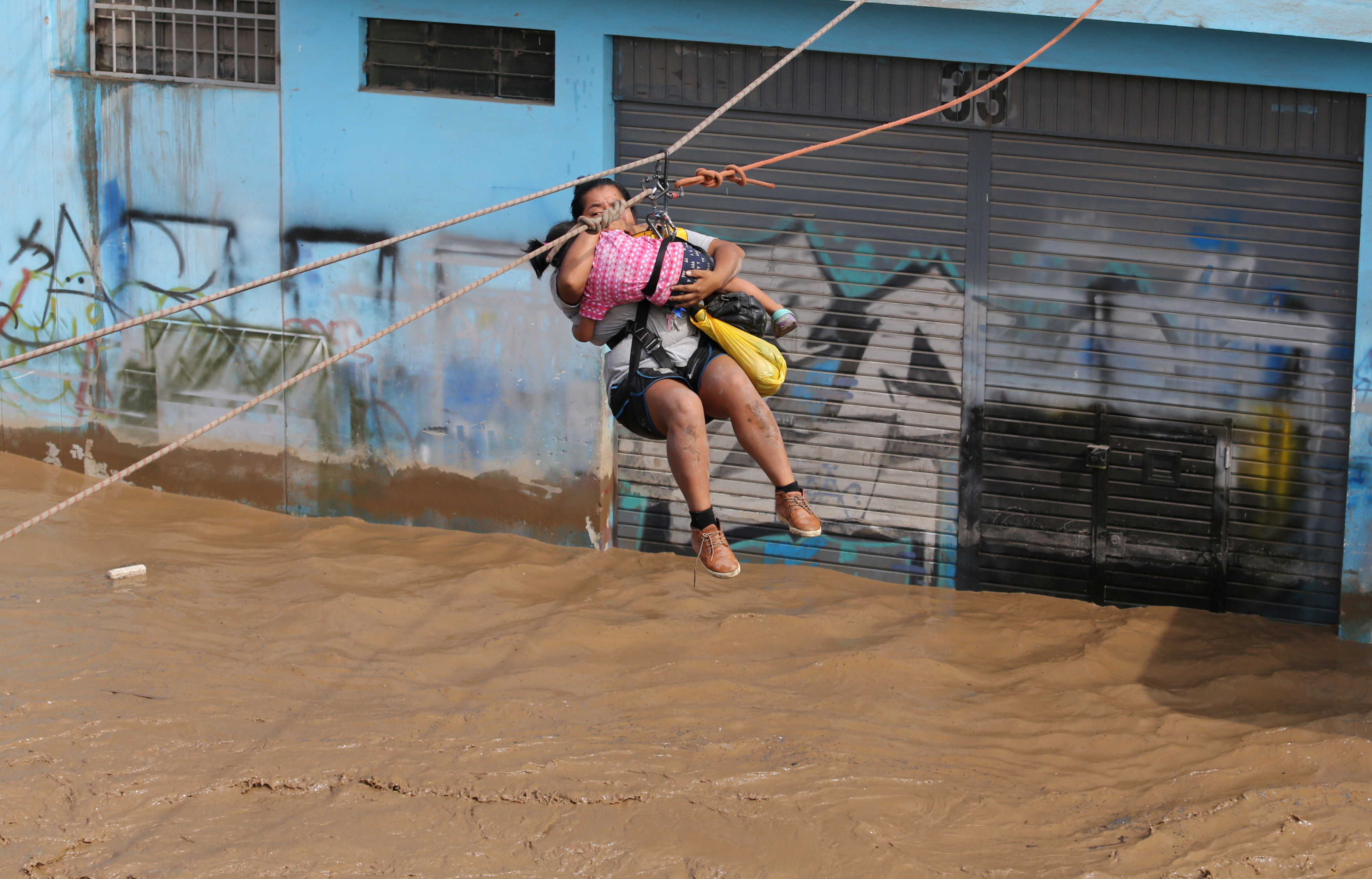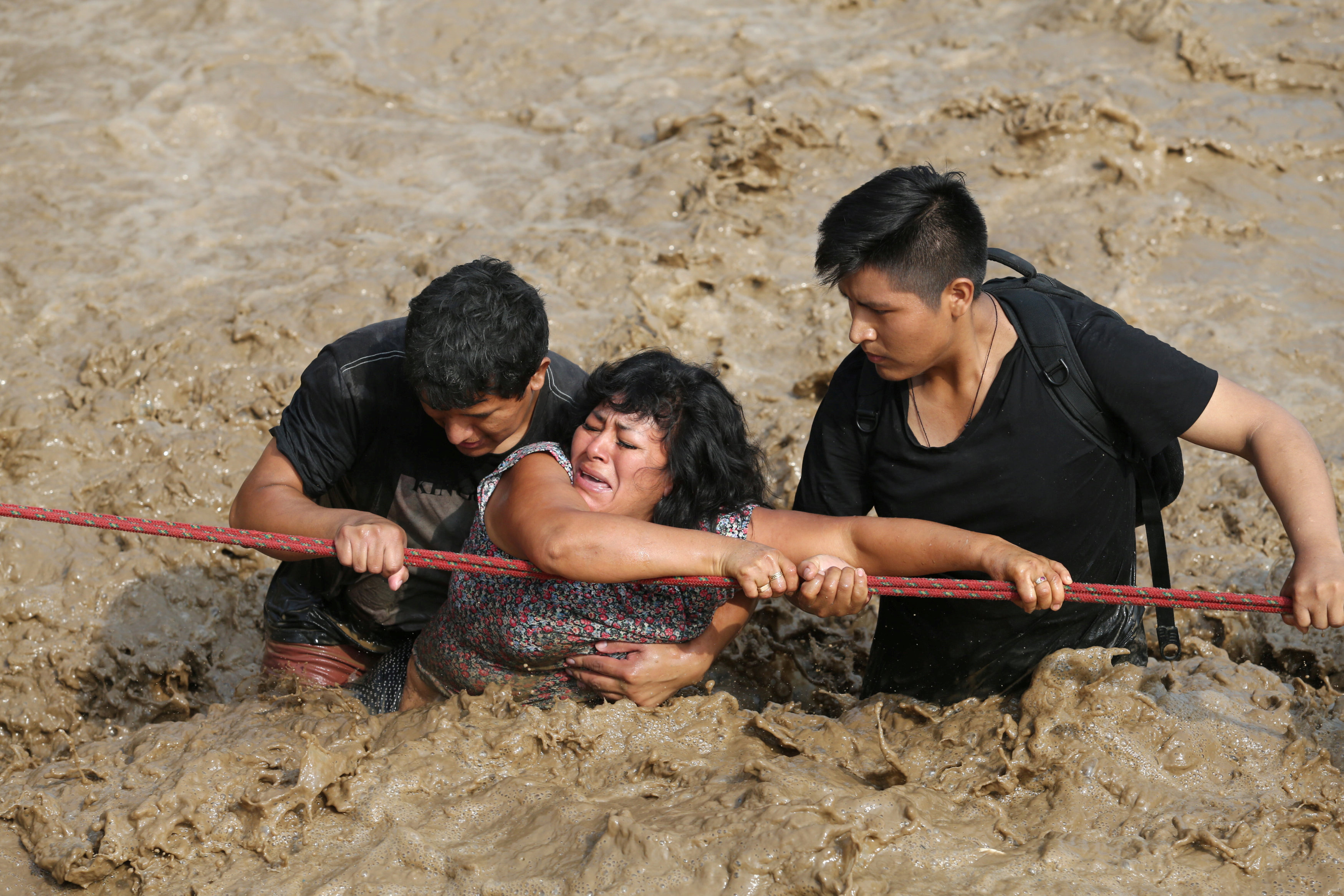
By Tom Westbrook and Benjamin Weir
SYDNEY (Reuters) – Howling winds, heavy rain and huge seas pounded Australia’s northeast on Tuesday, damaging homes, wrecking jetties and cutting power to thousands of people as Tropical Cyclone Debbie tore through the far north of Queensland.
Wind gusts stronger than 260 km per hour (160 mph) were recorded at tourist resorts along the world-famous Great Barrier Reef as the storm made landfall as a category four, one rung below the most dangerous wind speed level.
It was later downgraded to category two. Forecasters said high winds would likely persist overnight, although the storm would then weaken rapidly and was expected to be downgraded to category one by dawn on Wednesday.
Police said one man was badly hurt when a wall collapsed at Proserpine, about 900 km (560 miles) northwest of the Queensland capital, Brisbane, and was taken to hospital.
But the weather was still too bad to assess damage fully or mount an emergency response.
“We will also receive more reports of injuries, if not deaths. We need to be prepared for that,” Queensland Police Commissioner Ian Stewart told reporters in Brisbane.
As the storm forged slowly inland after nightfall, state premier Annastacia Palaszczuk urged people to stay indoors.
“It is a serious event and we do not want to see loss of life,” she told the Australian Broadcasting Corp.
“It will be a difficult night for people across our state.”
Cyclone Debbie made landfall at Airlie Beach, north of Proserpine, shortly after midday local time (0200 GMT), knocking out telephone services.
“It’s very noisy: Screaming, howling wind … sounds like a freight train,” Jan Clifford told Reuters by text from Airlie Beach as the cyclone made landfall.
“Still blowing like crazy,” she said four hours later.
Authorities had urged thousands of people in threatened areas to flee their homes on Monday, in what would have been the biggest evacuation seen in Australia since Cyclone Tracy devastated the northern city of Darwin on Christmas Day, 1974.
CATASTROPHE DECLARED
Torrential rain flooded streets and wind smashed windows, uprooted trees and tossed debris down streets, while jetties at Airlie Beach marina were wrecked, Nine Network television pictures showed.
Power was cut for 48,000 people in a wide area between the towns of Bowen and Mackay, north and south of Airlie Beach, Ergon Energy spokesman John Fowler said.
Ports at Abbot Point, Mackay and Hay Point were shut and Townsville airport was closed. Airlines Qantas, Jetstar and Virgin Australia suspended flights to and from the region and said planes may also be grounded on Wednesday, although Townsville airport said it would reopen.
BHP Billiton and Glencore halted work at their coal mines in the storm’s path.
The Insurance Council of Australia declared Cyclone Debbie a catastrophe, making it easier to make claims, but said in a statement it was too early to estimate the cost of damage.
With an eye 50 km (30 miles) wide, the cyclone had earlier damaged tourist resorts, washed away beaches and tore boats from moorings as it swept through the Whitsunday islands, guests told Reuters by telephone.
Cyclone Debbie is the strongest storm to hit Queensland since Cyclone Yasi destroyed homes and crops and devastated island resorts in 2011.
Authorities had feared tidal surges in low-lying areas as the storm whipped up waves and currents and lifted sea levels, but said later that danger had eased.
Holidaymakers tried to make the best of it as they bunkered down in resort buildings. “Go to the Whitsundays they said, it’d be fun they said, beautiful weather over here,” holidaymaker Kurt Moore told the Sydney Morning Herald.
“I’m so glad we got evacuated out of the place we were staying at, I think we’d be pooping watermelons right now to be honest,” he said.
Despite issuing evacuation orders, police said they were not sure how many people had heeded their advice.
That did not deter some thrill-seeking bodyboarders who paddled out to surf in the heaving seas at Airlie Beach, television footage showed.
(Additional reporting by Byron Kaye; Editing by Paul Tait)










